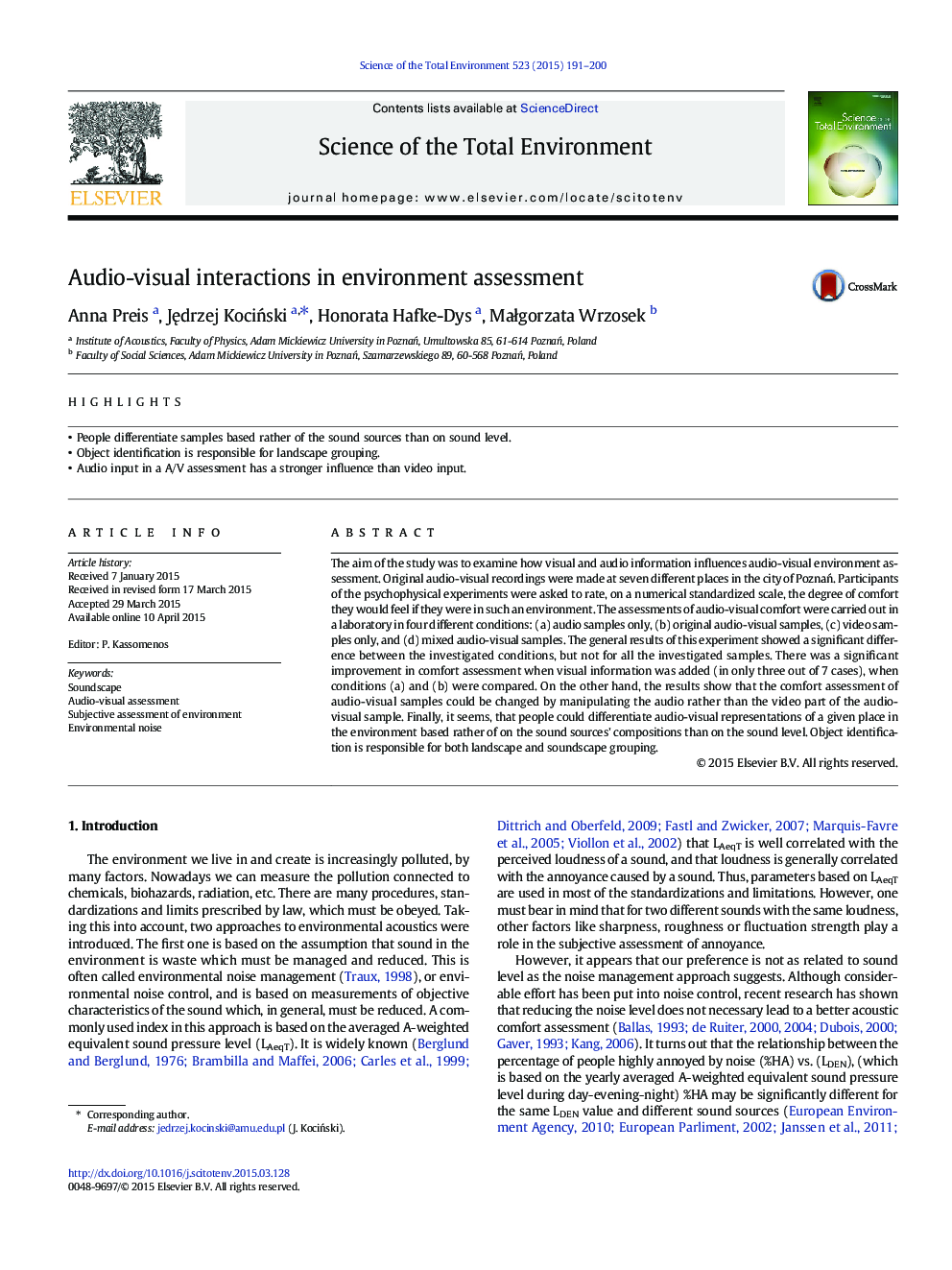| Article ID | Journal | Published Year | Pages | File Type |
|---|---|---|---|---|
| 4428406 | Science of The Total Environment | 2015 | 10 Pages |
•People differentiate samples based rather of the sound sources than on sound level.•Object identification is responsible for landscape grouping.•Audio input in a A/V assessment has a stronger influence than video input.
The aim of the study was to examine how visual and audio information influences audio-visual environment assessment. Original audio-visual recordings were made at seven different places in the city of Poznań. Participants of the psychophysical experiments were asked to rate, on a numerical standardized scale, the degree of comfort they would feel if they were in such an environment. The assessments of audio-visual comfort were carried out in a laboratory in four different conditions: (a) audio samples only, (b) original audio-visual samples, (c) video samples only, and (d) mixed audio-visual samples. The general results of this experiment showed a significant difference between the investigated conditions, but not for all the investigated samples. There was a significant improvement in comfort assessment when visual information was added (in only three out of 7 cases), when conditions (a) and (b) were compared. On the other hand, the results show that the comfort assessment of audio-visual samples could be changed by manipulating the audio rather than the video part of the audio-visual sample. Finally, it seems, that people could differentiate audio-visual representations of a given place in the environment based rather of on the sound sources' compositions than on the sound level. Object identification is responsible for both landscape and soundscape grouping.
